Preached on: Sunday 23rd February 2020.
The sermon text is given below or can be download by clicking on the “PDF” button above. There is no PowerPoint PDF accompanying this sermon.
Bible references: Matthew 6:5-13
Location: Brightons Parish Church
Text: Matthew 6:5:13
Sunday 23rd February 2020 (evening) Brightons Parish Church
Over the first year of my time here at Brightons, we’ve
focused on the prayers of Paul, covering a good number of his prayers from the New Testament epistles. I feel like we have created a sense of the evening service having a focus on prayer, with time always set aside to respond in prayer to God’s Word. I would like to continue that in the coming year, at the very least, so as to continue growing our prayer life and our coming together in corporate prayer.
I thought it would be good to also continue with a focus on teaching about prayer and it seemed worthwhile to dig into the Lord’s Prayer. I was already aware that the 24/7 prayer movement had written a course on prayer, largely structured around the Lord’s Prayer. It really is a very practical and helpful course, so my intention…
this year, is to use one of their videos every other
evening, starting tonight. Then, in the months between, we’ll have a more normal sermon, with a focus on the previous month’s theme or topic.
On the evenings where a video is shown, we may also from time to time have space to discuss the content of the video with one another, and we’ll have such an opportunity tonight.
So, we kick start our new series this evening and the Lord’s Prayer is probably the most famous prayer in history, crafted by Jesus himself. Martin Luther said: “To this day I am still nursing myself on the Lord’s Prayer like a child, and am still eating and drinking of it like an old man without getting bored of it.”
N.T. Wright, New Testament scholar, wrote: “The Lord’s
Prayer, correctly understood, is one of the high roads into the central mystery of Christian salvation and Christian experience.”
Christian writer, Timothy Jones, argued: “To cultivate a deeper prayer life all you have to do is say the Lord’s Prayer, but take an hour to do it.”
It was traditional for rabbis at the time of Jesus to have their own unique prayer that brought together their foundational teaching. John the Baptist’s followers seem to have had such a prayer because, in the parallel account in Luke’s gospel of the Lord’s Prayer, Jesus’ disciples asked, ‘Lord teach us to pray,’ and they added ‘just as John taught his disciples.” (Luke 11:1)
They weren’t just asking Jesus for a few good prayer tips.
They were saying: ‘We need a statement of faith!’ This makes the Lord’s Prayer the earliest Christian creed, given to us by Jesus himself some three centuries before the Church wrote down its first creed, at the Council of Nicaea.
As such, the Lord’s Prayer is our primary doctrinal foundation for life and faith, well worth repeating regularly so that its central truths can slowly shape our hearts and our minds. In this way, the Lord’s Prayer is like a model prayer: knowing what to pray.
But the Lord’s Prayer is also like a map: teaching us how to pray. It helps us to pray our own prayers from the heart, because when Jesus said, ‘this then is how you should pray,’ he may well have been telling his disciples to use it more as a guide than a destination.
Many of us find prayer difficult. We get distracted and
struggle to know what to say. But praying the Lord’s Prayer is a simple answer to these problems, for each phrase, even a few words of the prayer, can spark ideas of what to pray. Prayed in this way, each phrase of the Lord’s Prayer becomes an invitation to embark upon our own personal adventures of adoration, petition, intercession, confession and spiritual warfare.
So, without further introduction, we’re going to play the second video from the 24/7 Prayer Course. The theme is ‘adoration’, focusing upon the words: ‘Our Father, in heaven, hallowed be Your name.’
[PLAY VIDEO] [HAND OUT SHEET] [GIVE TIME FOR DISCUSSION]Summary comments:
The necessity and place of adoration has grown for me especially over the last 10 years, because I think it’s adoration that has got me through the hardest of dark times. I spoke in the morning service a few weeks ago about the effect that words had on my soul when I was a youth worker, and the year following my departure from that church, was a hard year – and I had to learn to worship and adore God, even amidst pain and hardship. It was a powerful but helpful lesson, standing me in good stead for the future.
Even this past week, something happened, which I won’t
go into, but in what happened, it was sore to the heart,…
it wounded me to some degree, and it has been in that
place of being with God, in that place of adoration – as I have appreciated afresh who God is, what I have in Him, and who I am in Jesus – it is in that place that I have felt God ministering to me and bringing a measure of healing. The place of adoration is powerful and life-giving.

